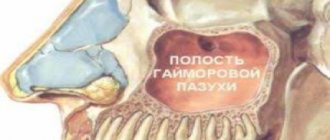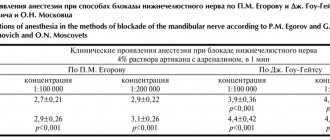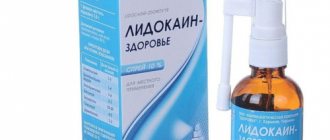Features of local anesthesia.
For the so-called “Risk Group (GR)”, some components of local anesthesia may be especially dangerous.
Categories of patients who belong to GR:
- experiencing increased fear (fear) of treatment, doctors;
- with drug intolerance;
- with some hereditary diseases;
- women during pregnancy (in extreme cases, anesthesia is used, only in the second trimester);
- women during lactation.
When using local anesthesia, the doctor faces several tasks:
Firstly, the selection of local anesthesia should be such as to completely eliminate sensitivity to pain in the area of intervention and obtain maximum effectiveness during and after the operation.
Secondly, choose a drug that will minimize the impact of individual substances contained in the drug.
Please note that if, after anesthesia, you still feel PAIN, then most likely there was an insufficient dose of anesthesia or the anesthesia was administered incorrectly!
An experienced dentist must be well versed not only in the actions of anesthetic drugs from various companies, but also in their chemical composition.
The doctor must know:
- duration of action of the local anesthetic drug,
- time of its elimination from the body,
- toxicological properties,
- the use of an anesthetic with other dental drugs in different combinations and different concentrations.
Contrary to people's expectations, modern medicine has moved so far forward that it makes any treatment very easy and comfortable even for the most pampered patients.
The Imperial Clinic invites you to experience the latest developments in anesthesiology and feel comfort instead of fear and pain.
Variety of options
Many people are accustomed to calling “local anesthesia” only an injection at the dentist. However, this concept is much broader. In the dental office, infiltration anesthesia is used - because... The area of influence there is small. If it is necessary to “freeze” a large area of the body, regional anesthesia is used (spinal, epidural, and a separate nerve bundle), which helps relieve pain in a fairly large area of the body.
There are also so-called blockades - when, in case of chronic long-term pain, sensations in a specific area or nerve bundle are temporarily relieved. This option is used, for example, for neuralgia. This is, as a rule, a necessary measure, because with such problems, most of the time people are saved by non-steroidal anti-inflammatory drugs, which either work poorly or do not work at all and cause side effects (with long-term use) on the gastrointestinal tract. However, it is worth understanding that this option has a temporary effect. Yes, it will be a little longer in time - for several hours, or even for a day. But without proper treatment, the pain will return again.
In general, regional anesthesia is preferable to general anesthesia, because allows you to avoid the use of narcotic drugs, which means you can gently recover from anesthesia. In this case, the person will not hallucinate, and the risk of complications, such as the development of nausea, is also reduced.
Under anesthesia. Four important rules of general anesthesia for the patient Read more
Compositions of components of modern local anesthesia drugs
The components of a local anesthetic (or local anesthetic) are substances such as:
- Local anesthetic (articaine, bupivacaine, lidocaine, mepivacaine, novocaine, prilocaine, trimecaine, etidocaine);
- Parahydroxybenzoates (food additives);
- Substance for constricting blood vessels - Vasoconstrictor (adrenaline or epinephrine, mesaton, norepinephrine or norepinephrine, felypressin or octapressin);
- Stabilizers (sodium sulfite, potassium sulfite).
Drugs used for local anesthesia do not always contain all of the above components.
To block impulses along the nerve endings, only one local anesthetic is enough, but for a longer action and to enhance the effect of anesthesia, vasoconstrictors are used.
Almost all new, local, anesthetic drugs, although to varying degrees, are vasodilators, so vasoconstrictors, being a vasoconstrictor, help concentrate the anesthetic, just in the area of dental intervention.
If you have contraindications to substances such as adrenaline, mesaton, norepinephrine or felypressin, then a local anesthetic can be used without a vasoconstrictor, but this reduces the useful time of the analgesic effect.
The presence of stabilizers and preservatives in modern drugs suggests that these anesthetics have a long shelf life.
Contraindications for the use of local anesthesia
All contraindications to the use of a local anesthetic can be combined into 3 points:
- Hypersensitivity of the body's immune system to local anesthetic:
- In this case, the attending physician selects the painkiller that is most suitable for the planned dental intervention (depth, duration, nature). - Insufficiency of the patient's metabolic regulation system (cleaning and excretion):
- This takes into account the peculiarities of the pathology of the patient's body, his general somatic condition, as well as the presence of contraindications. - Age limit:
- At this point, the dosage of local anesthetic drugs is taken into account, taking into account the age of the patient (child or elderly person) Criteria for choosing a local anesthetic drug (anesthetic).
Types of drugs for topical anesthesia
Application anesthesia is used by doctors at the Imperial Clinic for complete patient comfort in the form of ointments, solutions and aerosols. Using this product makes the penetration of the needle completely imperceptible.
Local anesthetics used in dentistry "Imperial"
| Name | View | Maximum single dose |
| Dicaine / Tetracaine | 0.5-4% solution or ointment | 20 mg |
| Anestezin / Benzocaine | 5-20% solution, ointment, paste, powder | 5 g |
| Lidocaine | 5-15% aerosol, 2-5% ointment, gel | 200 mg (0.2 g) |
| Pyromecaine / Bumecaine | 5% Ointment 2% solution in ampoules | 400 mg (0.4 g) |
Anesthesia of the desired area, when using topical anesthesia, occurs in one to two minutes, to a depth of 1-3 mm and lasts from 10 to 20 minutes.
Premedication - preparation for anesthesia
Premedication is the use of one or more medications immediately before surgery to facilitate anesthesia and reduce the risk of possible complications.
The most common premedication is sedation.
Sedatives used for premedication:
- Herbal preparations (tincture of motherwort, valerian, valocordin, corvalol, valoserdin, etc.)
- Benzodiazepine tranquilizers (phenazepam, diazepam, midazolam, etc.)
- Chemicals (eg trioxazine).
Indications for the use of sedative anesthesia for premedication
- Fear, horror, of dental treatment,
- impaired blood supply to the myocardium (coronary heart disease),
- high blood pressure (hypertension),
- attacks of suffocation due to bronchial spasms and swelling of the mucous membrane (bronchial asthma),
- endocrine diseases (eg diabetes mellitus),
- intoxication with thyroid hormones,
- Parkinson's disease,
- chronic neurological stereotypical seizures (epilepsy),
- finally, simply the desire of the patient himself.
Unhealthy reaction
One of the main concerns of people who are about to undergo local anesthesia is whether they will develop an allergy? It’s worth remembering here that if a person has already had his teeth treated by a dentist, then most likely he will not experience any unwanted reactions. After all, all the drugs are standard and have been used for decades. Before each operation, the anesthesiologist carefully examines the patient, collects anamnesis, in a personal conversation clarifies whether there are any chronic diseases or a tendency to allergies, etc. Also, the person is prescribed antihistamines in advance to reduce the risk of developing a problem during the process and reduce the intensity of allergic manifestations if they do occur. Today, a test is often carried out - the drug is diluted 100 times, injected with a thin needle under the skin and the reaction is observed. It should be understood that no one is immune from the development of anaphylactic shock, even with such careful preparation, so in the operating room there is always, just in case, a set of tools that allow you to relieve this formidable complication and save a person’s life.
Swelling, shock... How to provide first aid for allergies in a child Read more
Carrying out general anesthesia (general anesthesia) in dentistry
Anesthesia is one of the methods of pain relief, based on blocking the patient’s consciousness due to deep inhibition of sensitivity, synapses of the cerebral cortex, using various drugs.
In connection with new developments in anesthesiology, our dental clinic stopped using anesthesia with inhalation of a specialized gas and began to use a new licensed method called SEDATION (introduction of drugs into the body that put the patient into a short-term controlled drug sleep). The cost of the new sedative method of anesthesia for 20 minutes is 3,700 rubles.
Depending on how medications are introduced into the body, several types of sedation can be distinguished:
- Inhalation sedation
- Oral sedation
- Intravenous sedation
In dentistry, intravenous superficial sedation is most often used. So, as with shallow sedation, all body functions continue their normal activities, and the person is as if in a dream.
Sedation is a modern approach to dental treatment while you sleep and at rest. Video
The patient must be calm
Local anesthesia is considered milder and safer than general anesthesia because it is non-narcotic. However, it is often necessary to combine anesthetics with sleeping pills. And this is due, first of all, to the increased anxiety of patients. For example, when performing a simple laparoscopy, the doctor needs a good view inside the abdominal cavity. The surgeon passes the camera through the incisions in the peritoneum - in order to see all the damage there, he needs the stomach to be, figuratively speaking, inflated like a balloon. In this case, combined anesthesia is used, when the person is relaxed and sleeps due to drugs alone, and is relieved of pain by spinal or epidural anesthesia.
Often, for example, when performing spinal anesthesia, people are afraid that they will become disabled and will not be able to walk - for some reason they are firmly convinced that the doctor will definitely move his hand or make a mistake, and then the patient will be immobilized. In fact, during the process of administering the anesthetic, the doctor does not even touch the spinal cord - the drug is injected into the cerebrospinal fluid.
Another fear of many is that the drug will not work. In this case, it is necessary to administer an additional sedative intravenously, and, if necessary, add doses of certain drugs. And there is also such a problem as internal conviction. If a person already feels pain, it happens that nothing can relieve it, his psycho-emotional mood is so strong.
In general, regional anesthesia today is the most preferred option for pain relief, which is safer for humans. But it is worth remembering that before the intervention, the anesthesiologist is obliged to talk about all the available types of anesthesia and the procedure for their implementation, and the patient is required to decide what to choose.








